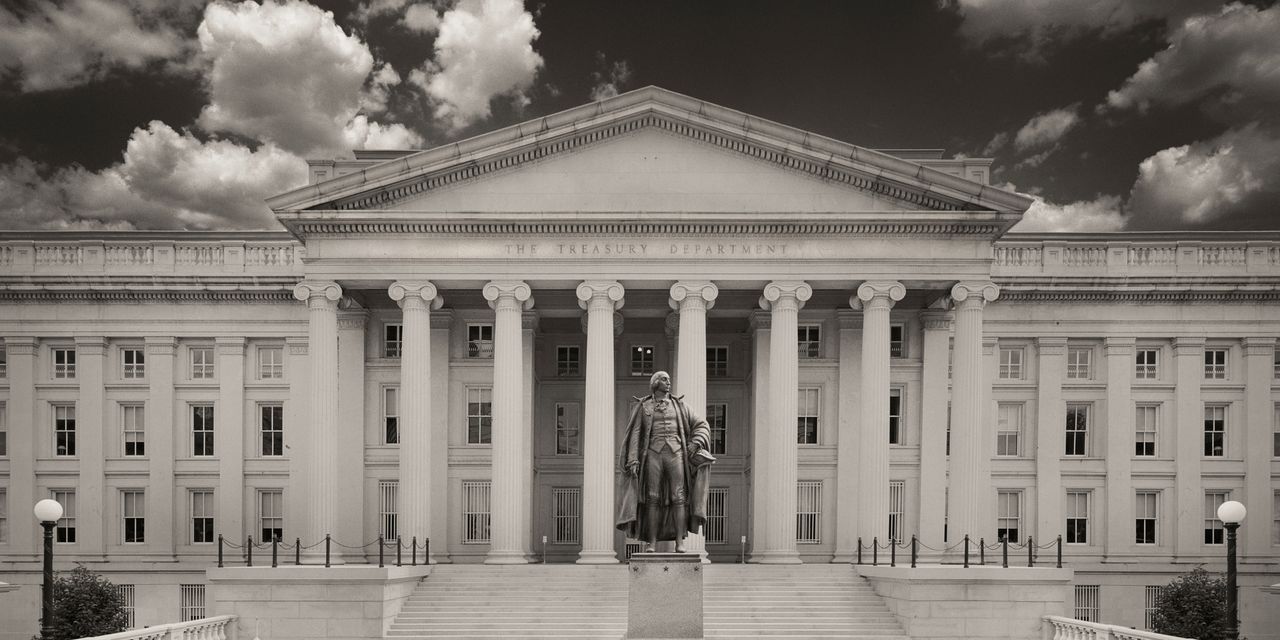
As Washington teeters closer to a possible government shutdown at midnight Thursday, here’s why the status of the nation’s debt ceiling may ignite more worry in financial markets.
September 30 marks the end of the federal government’s fiscal year, and the deadline for Congress to pass a funding measure. The debt ceiling, which is the amount of money lawmakers authorize the Treasury Department to borrow, must be suspended or raised by mid-October, or the United States likely will default on its debt.
It’s important to note that no one knows precisely when the U.S. Treasury will run out of money to pay its bills, including bondholders, let alone what would happen next. U.S. sovereign debt generally has been considered the safest and most liquid to own in the world, and all kinds of financial markets products and processes have been pegged to the orderly functioning of the near $21 trillion Treasury market.
Still, after a couple of topsy-turvy years in which the previously unthinkable became real, some Washington and Wall Street professionals have been girding for a worst-case scenario.
“I see it as an exceedingly slim chance, although with all the theatrics, the possibility has been ramped up,” said Ben Koltun, director of research for DC-based Beacon Policy Advisors. “If it does happen, it turns a manufactured political crisis into an economic crisis. The full faith and credit of the US would no longer be full.”
The stalemate on Capitol Hill right now is over a $3.5 trillion spending package.
Will the U.S. run out of money?
In a research note published September 22, Barclays analyst Joseph Abate noted there’s additional uncertainty over the debt ceiling now because it coincides with a funding package Congress needs to pass. What’s more, changes brought by the pandemic have made it far more difficult to assess the state of the Treasury Department’s expected payouts and inflows.
Barclays’ best guess for “X date,” or when Treasury will run out of money to pay bills, is October 29, but, Abate wrote, “the confidence interval around the X date is likely to remain fairly wide.” Moody’s Analytics Chief Economist Mark Zandi has pegged the fateful day at October 20, while Beacon’s Koltun thinks markets will start to get antsy in mid-October.
Read: U.S. seen running out of cash between Oct. 15 and Nov. 4, as debt-limit drama continues
The very idea of a U.S. default remains so incongruous that the reaction in financial markets isn’t the only unknown. The current showdown in Washington also has raised big questions about the financial-systems infrastructure. It’s a bit like Y2K — no one knows how the computers will respond.
“We do not believe and the market does not believe it’s a likely scenario,” said Rob Toomey, SIFMA managing director, capital markets and associate general counsel. “But it would be a real problem scenario for the system generally and operations and settlement specifically.”
Plumbing problems
SIFMA, the Securities Industry and Financial Markets Association, is the industry association that deals with the mechanics of how securities like sovereign bonds trade and settle. The group has worked with financial infrastructure providers including Fedwire and FICC to try to devise some sort of playbook. For now, there are two possible scenarios:
If the Treasury Department knows that it will miss a payment, it would ideally announce that at least a day in advance. That would allow the maturity dates of the bonds in question to be changed: a Monday maturity date would be changed to Tuesday, a Tuesday maturity would be changed to Wednesday, and so on. These revisions would happen day by day.
While that sounds relatively orderly, it still leaves many unknowns. For one thing, it could bifurcate the market for Treasury bonds and bills into those that are clearing normally and those whose maturity dates are being massaged, SIFMA told MarketWatch. That means a great deal of uncertainty around pricing and what it means for all the downstream securities pegged to Treasury rates.
In a second scenario, which SIFMA said would be very remote, Treasury cannot, or does not, give any advance warning of a failure to make a payment, and it just happens. That would be far more chaotic, “a real problem scenario,” as SIFMA says.
Strangely, the securities in question would probably simply disappear from the system. That’s because if a bond is supposed to mature — and be paid — on a particular day, the system assumes it has been. “It just illustrates the fact that the system wasn’t designed for this,” SIFMA notes.
If that happens, there would be a holder of record for the debt on the day before the maturity was scheduled, who would be entitled to get paid. However, it’s also likely that Treasury might pay some additional interest to make the bondholder whole.
Many analysts, Zandi included, think it’s highly likely that some sort of financial market freak-out — think of the day in 2008 when Congress initially failed to pass the Troubled Asset Relief Program legislation meant to address the financial crisis — would stop any of the scenarios SIFMA envisions before they happen, or a few minutes after midnight on the day they will.
But as Koltun put it, “Even if it’s just for a moment, the credibility that’s lost, could be a permanent hike in Treasury rates TMUBMUSD10Y, 1.483% and that has cascading effects on financial markets across the world. Each time the game of political chicken ends before there’s an actual default. If it actually happens, it becomes, this is real, and that fundamentally shakes the core of the full faith and credit pledge.”
The “game of chicken” also may already be denting the economy. The last two times Congress came close to not raising the debt limit, in 2011 and 2013, Moody’s Analytics found, “heightened uncertainty at the time reduced business investment and hiring and weighed heavily on GDP growth. If not for this uncertainty, by mid-2015, real GDP would have been $180 billion, or more than 1%, higher; there would have been 1.2 million more jobs; and the unemployment rate would have been
0.7 percentage point lower.”
Uncertainty rippling through the Treasury market in 2013 cost taxpayers anywhere from $40 million to $70 million, Barclay’s reckons.
Read next: These 10 states owe late interest on their federal jobless-benefit loans




